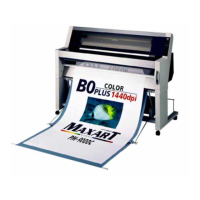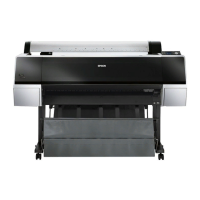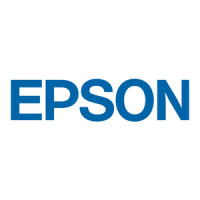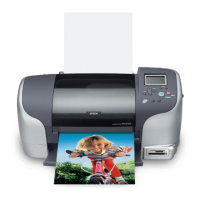EPSON Stylus Pro 9000
Technical Overview 24
2.2 Operation
The following sections describe how the printer’s main components operate.
2.2.1 Carriage Mechanism
The carriage mechanism includes the parts shown in
Figure 2-5
. Their
operation is described below.
CARRIAGE (CR) GUIDE RAIL
To print on paper as wide as B0, the printhead carriage must be more stable
and must travel further than the usual carriage. To make the printheads more
stable, EPSON added the CR Guide Rail to the Stylus Pro 9000.
Every EPSON ink jet printer until now has used a carriage guide shaft to
stabilize the carriage during printing and horizontal movement. The
Stylus Pro 9000 does away with the carriage guide shaft and relies on the
printer frame for its stability.
As shown in
Figure 2-5
, the Carriage attaches to the CR Guide Rail with eight
bearings, and the carriage in turn holds the subcarriage. The subcarriage holds
the printheads.
PLATEN GAP (PG) MECHANISM
Unlike previous models, the Stylus Pro 9000 uses a special system to ensure
that the distance between the printhead nozzles and paper remains the same
for all supported paper thicknesses. The subcarriage can be moved using the
PG Cam which is driven by the PG Gear; this causes the subcarriage and all its
components to move slightly nearer to or farther from the platen. The
subcarriage moves because the PG Cam is mounted off-center, so one side of
the cam pushes the subcarriage closer to the platen than the other side.
Figure 2-5. CR Guide Rail and PG Mechanism (side view)
Carriage
CR Guide Rail
Printhead
PG Cam
PG Gear
Bearings
Subcarriage
Platen

